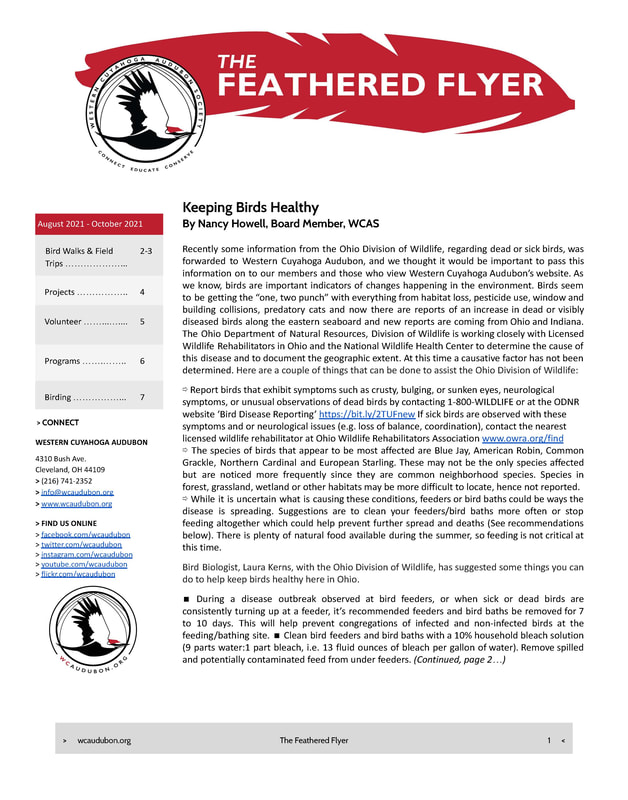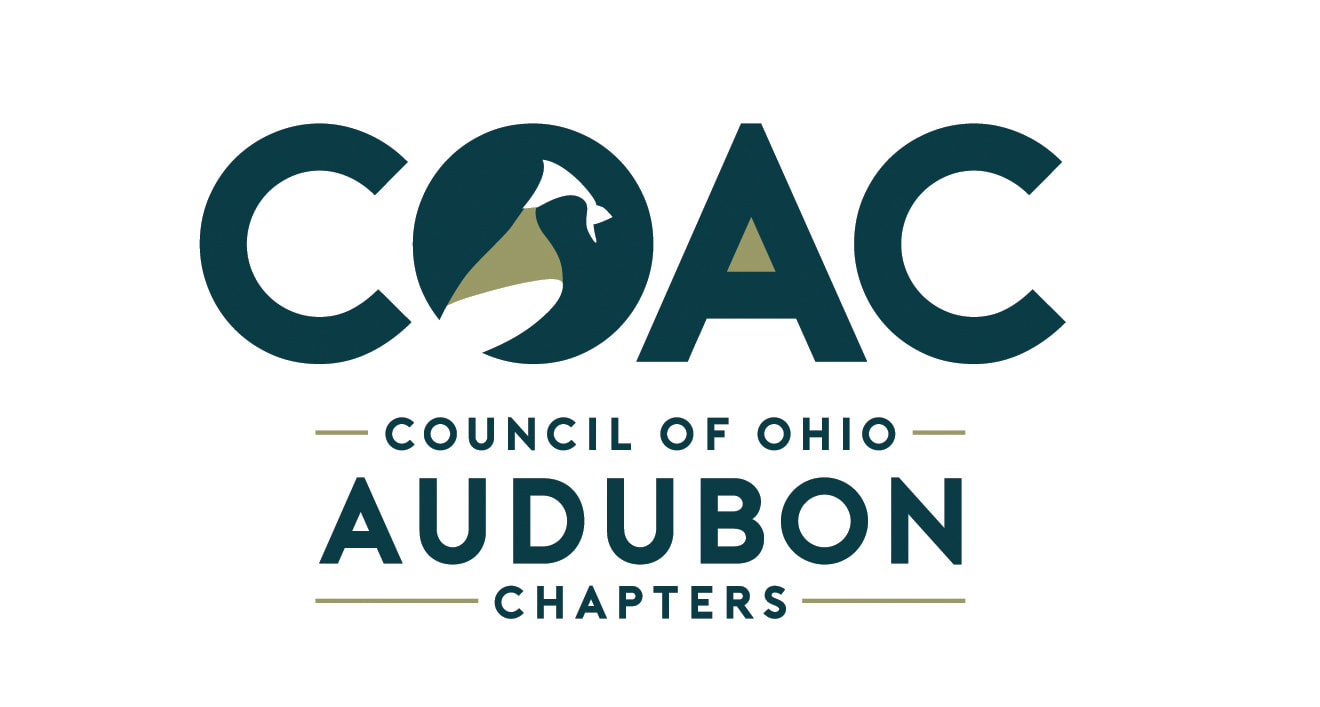Visiting Royal Oaks, Lorain County Metro Parks garage construction site of the new Chimney Swift Tower. In collaboration with Becah Troutman, Natural Resource Land Steward and Amanda Sebrosky, Founder, NEO Chimney Swift Conservation Society. Photos by Betsey O'Hagan.
Adventures in Construction of a Chimney Swift Tower
By Amanda Sebrosky, Founder, Northeast Chimney Swift Conservation Society Construction of a Chimney Swift Tower is not for the faint of heart. It isn’t that the construction is particularly difficult. With a minimum of skill and equipment, you can have a tower ready to plant in less than a week. Rather, the issue is the physical strength needed to manipulate and transport what will ultimately amount to around 200 pounds of wood. But it is doable with help. Below is a thumbnail sketch of construction of the towers. If you are building a tower for your yard, consult with the building department for your city. They may require a permit and plans. They can advise you as to the depth needed for the hole where the tower will be placed as well as requirements for cementing in the legs of the tower. The important part of the tower - the interior - is made from T1-11 4”OC, with the grooves facing toward the interior and running HORIZONTAL to the ground, giving the birds something to grasp. To get this orientation, the 8’ long side of each of the sheets of T1-11 is cut to make 4 pieces each. (Don’t worry -- this will become more clear as we proceed.) The sections of the tower are essentially 2’ square boxes that are 4’ tall, stacked and secured to make a tower of 12 or 16 feet. To get the sections to properly fit together, it’s important to be ruthlessly precise when cutting the T1-11. If you don’t have tools needed to properly work with large sheets of wood, it’s very difficult to get the pieces perfect. After ruining 2 sheets of T1-11, I found that having the lumberyard cut the wood was worth the minimal cost. This also made transport and handling of the lumber much easier. The tools needed are fairly basic and include: an electric drill, a saber saw and a circular saw. At the lumberyard, gather all the screws and lumber, including the sheets of ⅝” T1-11. Have the sheets of T1-11 cut per the instructions. This will consist of 2 sheets of ⅝” T1-11 (4” OC) each being cut along the long side into 4 equal pieces - each about 23 ⅞” wide. The other two sheets of T1-11 will each be cut into 4 pieces 22-¾ “ wide with a little bit of waste. These cut pieces look like little, solid ladders from the grooved side. Before starting the construction, prepare the hole where you want to place the tower. It must be placed where the birds have a large flyway and predators can’t ‘drop in’ (literally) for a light meal of ‘baby bird’. You will need an area at least 10 feet from any overhangs and trees but 25’ is best. You can place the tower by buildings, but then it is advisable to put a predator guard of flashing around the top 2 feet. Prepare the post holes as your building department prescribes but it will be similar to this: Dig 6” post hole on 20” centers 3’ deep. Place cement or gravel in the bottom 3”. Now--Time to make the actual tower! Look at all the pieces of T1-11. You will notice that the ends of the pieces are different. With a marker, lumber pencil or grease pencil, mark an arrow on the smooth side pointing toward the notched edge on each of the pieces of T1-11. Also, on the smooth side of the pieces, mark an ‘N’ on the pieces that are 22 ¾” wide and a ‘W’ on the pieces 23 ⅞” wide. Making certain that the arrows point in the same direction and the grooves are facing inward, screw the wide pieces into the narrow pieces. This makes a 4’ tall box with a 24” exterior and interior of 22 ¾”. After making every section, check that no screws protrude into the nesting chamber. When all sections are made (3 for a 12 foot tower; 4 for a 16 foot tower), with the arrows pointing in the same directions and matching letters on the same sides, tap the sections together, locking the rabbets at the ends. This will make the main part of the tower. The sections of the tower are secured by 1” x 4” wide X 12’ long lumber which need to be staggered on 16’ towers. This creates a channel where foam insulation is placed. For the legs, the tops of the 4 X 4” lumber should be beveled before being screwed into the interior. The longer side of the bevel is pressed into the corner; this allows detritus to more easily sift to the bottom for easy removal. The top of the tower is covered with ¾” plywood with an offset 16” hole. The hole has a little tower around it to help cutdown on the amount of light, rain and wind entering the nesting chamber. The bottom has a removable cover with small holes. Before placing the top or bottom coverings, make one last check of the interior to ensure that no screws protrude into the tower. The exterior covering can vary but whatever is used, care must be taken to decrease the possibility of predators climbing the tower. Coverings can be materials like slippery vinyl siding or rough T1-11 10” OC with grooves running vertically and 24” of flashing at the top. To decrease overheating in the tower, paint the tower with a LIGHT colored latex, exterior paint. Time to place the tower! With as many people as necessary for safety, tip the tower into the holes. The method will vary depending on the circumstances . Level the tower to make certain it is not leaning and secure it using the 2” X 4” x 8’ lumber and the stakes. Cement in per the instructions on the bag of cement. If there are Chimney Swifts in the area, there is probably no need to entice birds to the tower; they will probably find it soon enough. Be patient! Some towers take several years before they are ‘found’. You can try vocalizations played at least in the morning and evening to help advertise the new digs. You can buy a CD of vocalizations here: https://driftwood-wildlife-association.myshopify.com/products/08-chimney-swift-vocalization-cd To help build more towers, please consider giving to the Chimney Swift Conservation Initiative of Western Cuyahoga Audubon Society by going to wcaudubon.org. Make certain that you earmark the funds for Chimney Swifts. If you have questions, please email us at [email protected] Resources:
Amanda Sebrosky - Having grown up on a farm in Northeastern Ohio, I have always loved animals. My father gave me a sense of the importance of birds and my mother instilled in me the importance of volunteerism and contributing to causes that would support conservation. I obtained a BA in Biology from Case Western Reserve University, an RN from Cuyahoga Community College and a MS from Cleveland State University College of Urban Affairs, Environmental Track. Since retiring from University Hospitals IT department in 2017, I have concentrated on volunteerism and currently am active at Cleveland Metroparks and Lake Erie Nature & Science Center in the Lights Out program. I am a graduate of the Cuyahoga Soil and Water District Master Rain Gardener Class of 2019. While I love all things wild, I am working to promote the use of native plants and chimney swift conservation. Add your 'Like' to the Northeast Ohio Chimney Swift Conservation Society Facebook Page. Contact: Amanda Sebrosky, Founder, Northeast Ohio Chimney Swift Conservation Society. Email: [email protected] Phone: (440) 610-1148.
Facebook Page: https://www.facebook.com/chimneyswiftconservation
Donate to the Northeast Ohio Chimney Swift Conservation Society To Build More Towers
Chimney Swift populations have declined by 70% since 1966. There are many factors contributing to this decline but one big reason is lack of habitat. Make a donation to WCAS to help Northeast Ohio Chimney Swift Conservation Society's efforts to build more towers. Use our safe and secure PayPal payment button below to make a donation in any amount. All donations are gratefully received.
Comments
|
Story BlogThe Feathered Flyer blog publishes human interest stories about birding and habitat conservation. After watching, ‘My Painted Trillium Quest' by Tom Fishburn, Kim Langley, WCAS Member said, “Wonderful! It was a lift just knowing that such a site exists and is being protected!”
Media LibrariesQuarterly NewsletterSTORIESPodcastsWCAS is a proud member of The Council of Ohio Audubon Chapters (COAC) and promotes chapter development by sharing the best practices, brainstorming solutions to common problems, and building relationships in workshops and retreats. Subscribe
VideosYouth
Advocacy
Clean Energy
Reporting
Awards
Volunteerism
Take ActionResourcesBlogsArchives
October 2023
Categories
All
|
EDUCATENews Blog
Monthly Speakers Field Reports Bird Walk Reports Christmas Bird Count-Lakewood Circle Media Library Newsletter Archive Education Resources STORE |
Western Cuyahoga Audubon Society
4310 Bush Avenue Cleveland, Ohio 44109 [email protected] Western Cuyahoga Audubon Society is a 501(c)(3) nonprofit organization. Your donation is tax-deductible. The tax ID number is: 34-1522665. If you prefer to mail your donation, please send your check to: Nancy Howell, Western Cuyahoga Audubon Treasurer, 19340 Fowles Rd, Middleburg Hts, OH 44130. © 2020 Western Cuyahoga Audubon Society. All rights reserved. Privacy Policy | Terms of Use | Legal | Store Shipping Rates | Site Map |










 RSS Feed
RSS Feed

